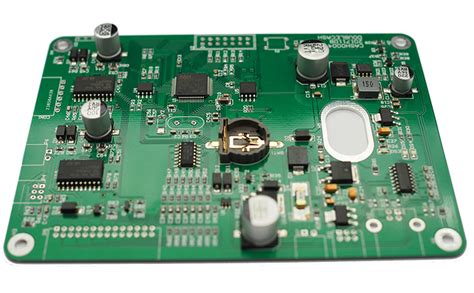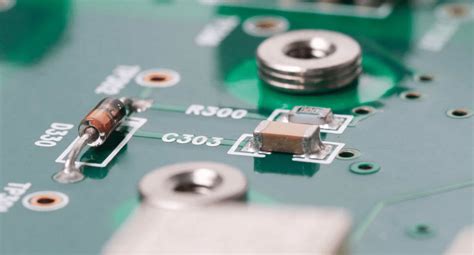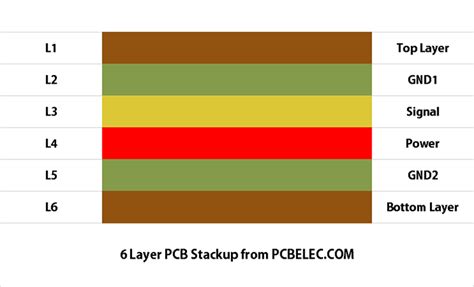Soldering on flexible pcb
Techniques For Soldering On Flexible PCBs
Soldering on flexible printed circuit boards (PCBs) presents unique challenges and requires specialized techniques to ensure reliable and durable connections. Flexible PCBs, often used in applications where space constraints and mechanical flexibility are paramount, demand a meticulous approach to soldering due to their inherent fragility and the potential for thermal damage. To achieve optimal results, it is essential to understand the nuances of working with these delicate substrates.
One of the primary considerations when soldering on flexible PCBs is the selection of appropriate materials.
The choice of solder, flux, and soldering iron tip can significantly impact the quality of the solder joints. Lead-free solder, while environmentally friendly, has a higher melting point than traditional leaded solder, which can pose a risk to the heat-sensitive flexible substrate. Therefore, it is crucial to use a solder with a lower melting point, such as a eutectic solder alloy, to minimize thermal stress. Additionally, selecting a flux that is compatible with the materials used in the flexible PCB is vital to ensure proper wetting and adhesion of the solder.
Temperature control is another critical factor in the soldering process.
Flexible PCBs are more susceptible to thermal damage than their rigid counterparts, making it imperative to use a soldering iron with precise temperature regulation. Preheating the flexible PCB can help to reduce thermal shock and ensure a more uniform temperature distribution during soldering. This can be achieved using a preheating station or a hot air rework station set to a controlled temperature. By gradually raising the temperature of the PCB, the risk of delamination or warping is minimized.
The technique of soldering itself must be adapted to accommodate the flexible nature of the PCB.
Traditional soldering methods, such as drag soldering or wave soldering, may not be suitable due to the potential for mechanical stress and damage. Instead, hand soldering with a fine-tipped soldering iron is often preferred. This allows for greater control and precision, reducing the likelihood of damaging the delicate traces and pads on the flexible PCB. It is also advisable to use a soldering iron with a lower wattage to prevent excessive heat buildup.
In addition to hand soldering, reflow soldering can be employed for flexible PCBs, particularly for surface-mount components.
This method involves applying solder paste to the pads, placing the components, and then heating the assembly in a reflow oven. The key to successful reflow soldering on flexible PCBs is to carefully control the temperature profile to avoid overheating. A gradual ramp-up in temperature, followed by a controlled peak and a gradual cool-down, helps to ensure that the solder paste reflows properly without causing thermal damage to the PCB.
Furthermore, the use of adhesives and stiffeners can provide additional support during the soldering process.
Adhesives can be applied to secure components in place, preventing movement and ensuring accurate alignment during soldering. Stiffeners, typically made from materials such as polyimide or FR4, can be attached to specific areas of the flexible PCB to provide rigidity and support, reducing the risk of mechanical damage during handling and soldering.
In conclusion, soldering on flexible PCBs requires a careful and methodical approach to ensure reliable and durable connections. By selecting appropriate materials, maintaining precise temperature control, and employing suitable soldering techniques, it is possible to achieve high-quality solder joints without compromising the integrity of the flexible substrate. The use of adhesives and stiffeners can further enhance the stability and reliability of the soldered connections, making flexible PCBs a viable option for a wide range of applications.
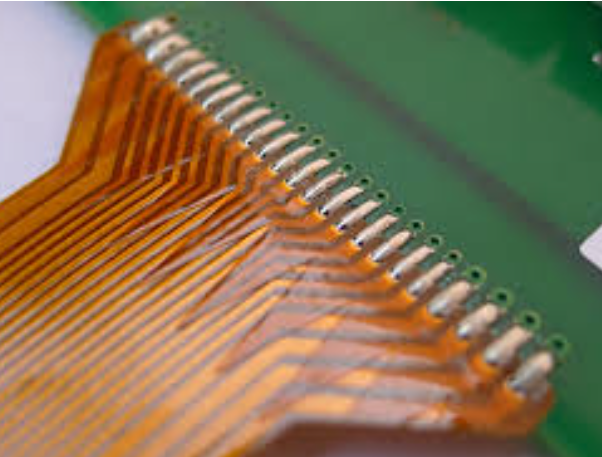
Common Challenges In Flexible PCB Soldering
Soldering on flexible printed circuit boards (PCBs) presents a unique set of challenges that differ significantly from those encountered with traditional rigid PCBs. One of the primary difficulties lies in the inherent flexibility of the substrate material.
Unlike rigid PCBs, which maintain their shape and provide a stable platform for soldering, flexible PCBs can bend and twist.
This flexibility can lead to misalignment of components during the soldering process, making it difficult to achieve precise and reliable connections. Consequently, maintaining the integrity of the solder joints becomes a critical concern.
Another challenge is the thermal sensitivity of the materials used in flexible PCBs.
These boards are typically made from polyimide or polyester films, which have lower thermal resistance compared to the FR4 material used in rigid PCBs. Excessive heat during soldering can cause these materials to deform or even melt, leading to potential damage to the circuit. Therefore, controlling the temperature and duration of the soldering process is essential to prevent thermal damage. This often necessitates the use of specialized soldering equipment and techniques, such as low-temperature soldering alloys and precise temperature control systems.
In addition to thermal sensitivity, the mechanical properties of flexible PCBs also pose challenges.
The repeated bending and flexing of the board can lead to mechanical stress on the solder joints, potentially causing them to crack or become detached over time. To mitigate this risk, it is crucial to use soldering techniques that enhance the mechanical strength of the joints. For instance, using a larger solder fillet or incorporating strain relief features can help distribute the mechanical stress more evenly and improve the durability of the connections.
Moreover, the surface finish of flexible PCBs can affect the soldering process.
Common surface finishes, such as organic solderability preservatives (OSPs) or immersion silver, may not provide the same level of solderability as the more traditional hot air solder leveling (HASL) finish used in rigid PCBs. This can result in poor wetting and weak solder joints. To address this issue, it is important to select a surface finish that is compatible with the soldering process and provides good solderability. Additionally, proper cleaning and preparation of the PCB surface before soldering can help improve the quality of the solder joints.
Furthermore, the miniaturization of electronic components adds another layer of complexity to flexible PCB soldering.
As devices become smaller and more compact, the components used in flexible PCBs also shrink in size. This miniaturization requires precise placement and soldering of tiny components, which can be challenging due to the limited space and the need for high accuracy. Advanced soldering techniques, such as reflow soldering or laser soldering, can help achieve the required precision, but they also demand specialized equipment and expertise.
In conclusion, soldering on flexible PCBs involves navigating a range of challenges, from managing the thermal sensitivity and mechanical properties of the materials to ensuring proper surface finish and handling miniaturized components. Each of these factors requires careful consideration and specialized techniques to achieve reliable and durable solder joints. By understanding and addressing these common challenges, manufacturers can improve the quality and performance of flexible PCBs, enabling their use in a wide array of advanced electronic applications.
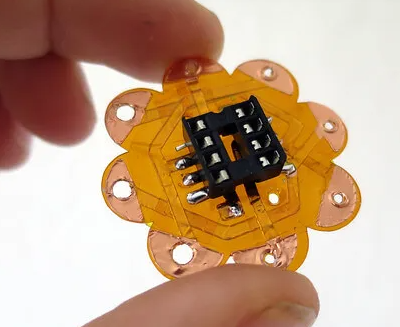
Essential Tools For Soldering Flexible PCBs
Soldering on flexible PCBs, or flex circuits, requires a specialized set of tools to ensure precision and reliability. These circuits, known for their ability to bend and twist, are increasingly used in modern electronics due to their versatility and space-saving properties. However, their unique characteristics necessitate a careful approach to soldering, starting with the selection of essential tools.
First and foremost, a high-quality soldering iron is indispensable.
Unlike traditional rigid PCBs, flexible PCBs are more sensitive to heat, making temperature control crucial. A soldering iron with adjustable temperature settings allows for precise control, reducing the risk of damaging the delicate flex material. Additionally, a fine-tipped soldering iron is recommended to handle the intricate and often densely packed components on flexible PCBs.
Equally important is the choice of solder.
Lead-free solder is commonly used due to environmental and health considerations, but it requires higher temperatures to melt. This makes the temperature control feature of the soldering iron even more critical. Moreover, the solder should have a flux core to facilitate the flow of solder and improve the quality of the joints. Flux helps to clean the surfaces being soldered, ensuring a strong and reliable connection.
In conjunction with the soldering iron and solder, a good quality flux pen is essential.
Applying additional flux to the soldering area can significantly enhance the soldering process by preventing oxidation and improving the wetting properties of the solder. This is particularly important for flexible PCBs, where maintaining the integrity of the connections is paramount.
Another vital tool is a pair of precision tweezers.
These are necessary for handling small components and positioning them accurately on the flexible PCB. Given the delicate nature of flex circuits, using tweezers with fine, non-magnetic tips can prevent accidental damage and ensure precise placement of components.
A magnifying lamp or microscope is also highly recommended.
The small size and high density of components on flexible PCBs can make it challenging to see what you are doing with the naked eye. Magnification aids in inspecting solder joints and ensuring that all connections are properly made without any unintended bridges or cold joints.
Furthermore, a hot air rework station can be extremely useful, especially for soldering surface-mount devices (SMDs) on flexible PCBs.
This tool allows for the even distribution of heat, which is crucial for avoiding thermal stress on the flex material. It also facilitates the removal and replacement of components without causing damage to the PCB.
In addition to these tools, having a good quality soldering mat or work surface is beneficial.
A heat-resistant mat can protect your workspace and provide a stable, non-slip surface for working on flexible PCBs. This is particularly important when dealing with the delicate and often slippery nature of flex circuits.
Lastly, proper ventilation is essential when soldering, as the fumes generated can be harmful. A fume extractor or a well-ventilated workspace can help mitigate the risks associated with inhaling solder fumes.
In conclusion, soldering on flexible PCBs requires a combination of precision tools and careful techniques. A high-quality soldering iron with temperature control, appropriate solder and flux, precision tweezers, magnification aids, a hot air rework station, a heat-resistant work surface, and proper ventilation are all essential for achieving reliable and high-quality solder joints. By investing in these tools and taking a meticulous approach, one can effectively manage the challenges associated with soldering on flexible PCBs.
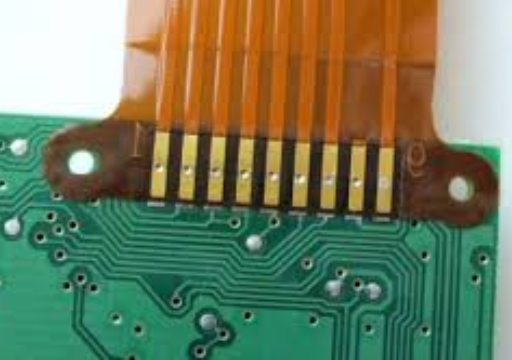
Best Practices For Ensuring Reliable Solder Joints On Flexible PCBs
Soldering on flexible printed circuit boards (PCBs) presents unique challenges that require meticulous attention to detail and adherence to best practices to ensure reliable solder joints. Flexible PCBs, known for their ability to bend and conform to various shapes, are increasingly used in modern electronics due to their versatility and space-saving properties. However, their flexibility also introduces potential issues in the soldering process, making it essential to follow specific guidelines to achieve optimal results.
To begin with, selecting the appropriate materials is crucial.
The choice of solder paste, flux, and soldering iron tip can significantly impact the quality of the solder joints. It is advisable to use a solder paste with a low melting point to minimize thermal stress on the flexible substrate. Additionally, a no-clean flux is often preferred as it reduces the need for post-soldering cleaning, which can be challenging on flexible PCBs. The soldering iron tip should be fine and precise to allow for accurate application of heat without damaging the delicate traces.
Preheating the flexible PCB is another important step in the soldering process.
Preheating helps to reduce thermal shock and ensures a more uniform temperature distribution across the board. This can be achieved using a preheating station or a hot air rework station. By gradually raising the temperature of the PCB, the risk of warping or delamination is minimized, leading to more reliable solder joints.
When soldering components onto a flexible PCB, it is essential to use a controlled and consistent soldering technique.
Applying too much pressure or heat can damage the flexible substrate, while insufficient heat can result in weak solder joints. A temperature-controlled soldering iron is recommended to maintain a stable temperature throughout the process. Additionally, using a soldering iron with a fine tip allows for precise application of solder, ensuring that it flows properly and forms a strong bond with the component leads and PCB pads.
Another best practice is to use appropriate support fixtures during the soldering process.
Flexible PCBs can easily move or shift, making it difficult to achieve accurate solder joints. Support fixtures, such as custom jigs or fixtures, can hold the PCB in place and provide stability during soldering. This not only improves the accuracy of the soldering process but also reduces the risk of damaging the PCB due to excessive movement.
Post-soldering inspection is a critical step to ensure the reliability of the solder joints.
Visual inspection under magnification can help identify any defects, such as cold solder joints, solder bridges, or insufficient solder coverage. In addition to visual inspection, electrical testing can be performed to verify the integrity of the solder joints. This may include continuity testing, resistance measurements, or functional testing of the assembled PCB.
Finally, it is important to consider the environmental factors that can affect the reliability of solder joints on flexible PCBs.
Exposure to moisture, temperature fluctuations, and mechanical stress can all impact the long-term performance of the solder joints. Implementing protective measures, such as conformal coatings or encapsulation, can help shield the solder joints from environmental stressors and enhance their durability.
In conclusion, soldering on flexible PCBs requires careful consideration of material selection, preheating, controlled soldering techniques, support fixtures, and post-soldering inspection. By adhering to these best practices, it is possible to achieve reliable solder joints that ensure the optimal performance and longevity of flexible PCBs in various electronic applications.



